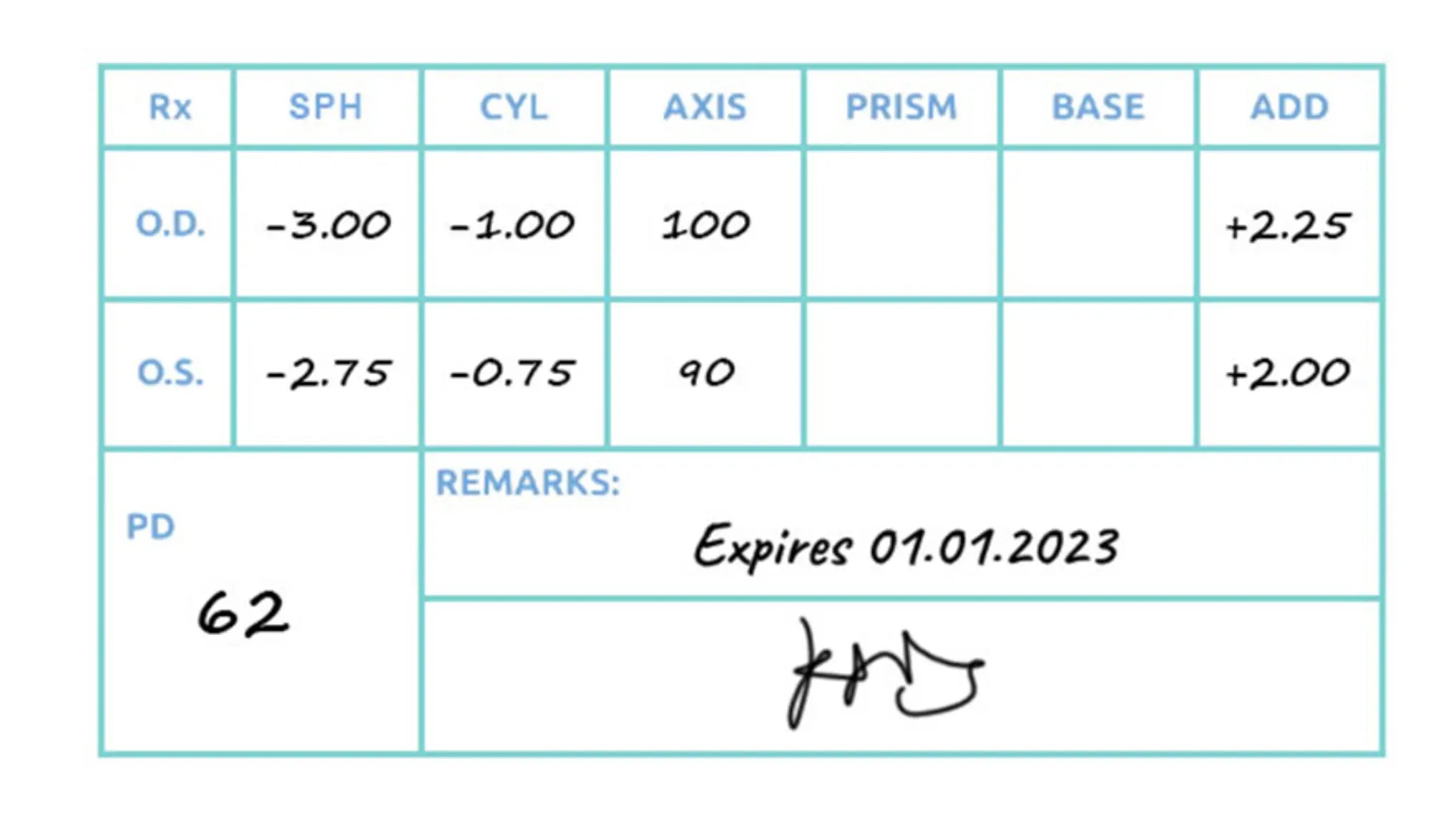
Wie lese ich Rezept?
Ihr Rezept (RX) ist das, was ein Ophthalmologe (ein MD) oder ein Optumb (ein Doktor der Optometrie) bietet, um Ihr Sehen mit einem Brillenpaar mit Korrekturlinsen zu korrigieren.
Das folgende Formular ist ein kurzes verschreibungspflichtiges Beispiel, mit dem Sie Ihr optisches Rezept verstehen können.
- OD: Bezieht sich auf "Oculus Dexter" oder das rechte Auge. OS bezieht sich auf "Oculus Sinister" oder das linke Auge.
- SPH: Kugel oder kugelförmig bezieht sich auf die Brechungskorrektur im Rezept. Minus/negative (-) Werte dienen zur Kurzsichtigkeit. Dies bedeutet, dass Sie Probleme haben, die Dinge weit entfernte zu sehen, und plus/positiv (+) Werte sind für Weitsichtigkeit. Dies bedeutet, dass Sie Probleme haben, in der Nähe zu sehen. Wenn "PL" oder "Plano" für diesen Wert geschrieben wird, sollten Sie 0,00 für dieses Feld auswählen.
- Zyliert: Zylinder bezieht sich auf die Stärke der Korrektur der Astigmatismus. Es kann entweder positiv (+) oder negativ (-) sein. Ein Zyl -Wert hat immer einen Achsenwert. Wenn "DS" oder "SPH" im Zyl -Raum in Ihrem Rezept notiert wird, bedeutet dies, dass Sie keinen Astigmatismus in diesem Auge haben. Geben Sie in diesem Fall 0,00 für die Zylinder und Achse ein.
- Achse: Bezieht sich auf den Winkel der Korrektur für den Astigmatismus (Zyl) im Auge von 1 bis 180 Grad. Denken Sie daran, kein Zylinderwert, kein Achsenwert. Sie müssen zusammenarbeiten
Richtiger Astigmatismus. - HINZUFÜGEN: Bezieht sich auf eine zusätzliche Plus -Vergrößerung, die zum Lesen erforderlich ist, z. B. in einer progressiven oder bifokalen Linse. Es wird manchmal in Ihrem Rezept als NV-ADD (nahe Sichtabzug) gesehen. Wir zeigen ein einzelnes NV-ADD-Feld an, da es für beide Augen fast immer der gleiche Wert hat.
- Prisma: Ist die prismatische Kraft, die zur Korrektur von Sehverschiebungen verwendet wird, wie doppeltes Sehen. Wenn Sie keine Prismenkorrektur in Ihrem Rezept haben, geben Sie keine Prismenwerte an, da dies Ihr Sehvermögen negativ beeinflusst. Die Basisrichtung für Prisma ist üblich, als BU (Base Up), BD (Basis Down), Bi (Basis in) und Bo (Basis nach Out).

NOTIZ:
Kugel- und Zylinderleistung wird immer bei Dioptern gemessen. Diese sind in Dezimalform vorhanden und sind üblicherweise in Viertel-Diopter-Werten geschrieben. Im Gegensatz dazu sind die Achsenwerte ganze Zahlen von 1 bis 180 und diktieren einen Ort. Es ist wichtig zu beachten, dass eine Brille -Rezept nicht mit der Acontact -Objektivrezept entspricht, sodass die beiden nicht austauschbar sind.












